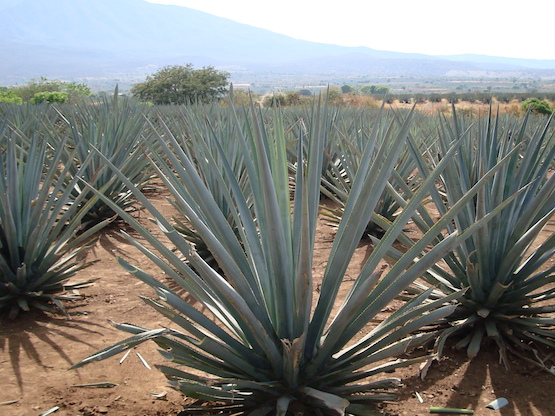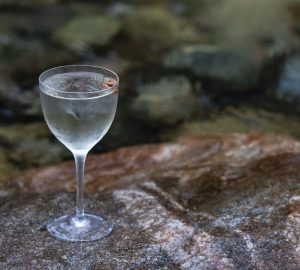The team gets into the details and differences behind the two agave spirits. By Elysia Bagley.
During their recent pop-up and masterclass in Shanghai, Candelaria’s Alejandro Alayon and Oceane Godfroid shared their expert knowledge of the two Latin spirits at the heart of the Paris taqueria and cocktail bar’s agave-centric concept: mezcal and tequila.
1 The meaning’s in the name
The word “mezcal” comes from a combination of the Nahuatl (Aztec) term mexcalli, meaning “oven-cooked agave”. Tequila means party. No, no, we joke – tequila’s namesake is the Mexican city of Tequila; the birthplace and primary production area of the spirit. Originally, tequila was called vino de mezcal de Tequila (mezcal wine from Tequila), but eventually popular culture led to it just being called “tequila”.
2 Origin is everything… by law.
Tequila is classified as a Mexican-origin spirit, produced mainly in the areas surrounding the city of Tequila and in the highlands of Jalisco, called Los Altos. Like champagne being only from Champagne, law states that tequila must be made and bottled in five designated states of Mexico. Same goes for mezcal, which can only be produced in nine states, most notably Oaxaca. Even if a spirit uses the exact same ingredients and production methods as tequila or mezcal, if produced outside of the designated areas, it’s not allowed to be labelled as tequila or mezcal.
3 Plant matters
Being agave-based spirits, the type of agave plant used naturally plays a big role in production. Now, while there are over 200 species of agave, tequila is only made from blue agave. Mezcal, however, can be made from any species of agave – espadin, tobala, madrecuixe, tobasiche, barril, arroqueno, tepextate and palome are some varieties – but there are over 30 commonly used agave species; some cultivated, some wild. So, technically all tequilas are mezcal – but not all mezcals are tequila.
4 Loving care
Growing agave is a labour of love: one agave plant takes six to eight years to mature (but some varieties, like tobala, take up to 30), all the while carefully cultivated by the hands of agave farmers – from planting, to tending and trimming. The harvests are carried out by special farmers – jimadors for tequila and palenqueros for mezcal – who use sharp blades – coas and machetes, respectively – to cut away the spiky leaves and reveal the heart, called the pina. At the time of harvest, one pina is usually around 50kg.
5 100 percent agave?
The two primary categories of tequila are mixto (with other sugar sources added before fermentation) and 100 per cent agave, a.k.a. tequila and 100 percent agave tequila. When it comes to mixtos, tequila must be made from at least 51 per cent blue agave sugar. Only tequilas distilled using only 100 per cent blue agave sugars can be called “100 per cent agave”.
New laws state that mezcal must be 100 per cent agave, and it has three of its own classifications: mezcal (industrially produced mezcals), artisanal mezcal (the majority of mezcals on the market today, using methods mostly classified as traditional), and ancestral mezcal (very traditionally produced and must be made with clay pot stills).
6The finishes
Within the two categories, tequilas generally come in five finishes: blanco (also called plata or white, the purest, unaged form), reposado (“rested”; aged for at least two months, but less than one year), anejo (“aged”, for at least one year, but less than three years), extra anejo (“extra aged”, for at least three years), joven or oro (“young” or “gold”, with caramel added for gold hue, and typically mixto).
Under its three categories, mezcal comes in six finishes: blanco, reposado, anejo, madurado (“matured”; specifically glass matured), destilado con (“distilled with”; redistilled with fruits, grains or raw meats for flavour), and abocado con (“flavoured with”; macerated or flavoured with flavour essences).
Tequila can be aged in oak barrels after distillation, but mezcal, when aged, is traditionally done so in glass. However, the Candelaria crew shared that mezcal is rarely aged.
7 Smokers and non-smokers
Tequila and mezcal can be produced the same modern way, cooking the agaves in steam ovens, and crushing using a shredder to extract the sweet liquid which is then collected for fermentation. But both also allow for very different processes – particularly at the traditional end of the spectrum. In tequila, that means cooking in stone or brick ovens, followed by crushing under a giant stone wheel, called a tahona – a practice Olmeca Altos uses itself. For mezcal, the meaning of tradition goes way beyond. In the most artisanal cases, pinas can be baked for days in huge pits dug into the earth, lined with stones, then covered first with plant fibres to burn, and then a layer of earth to keep in the heat. They’re then crushed by tahonas or even mallets, and often distilled in clay pots, but it’s cooking in the earthen ovens that results in mezcal’s deeply smoky signature flavour. Tequilas, even in a stone oven, don’t get that smoke.








